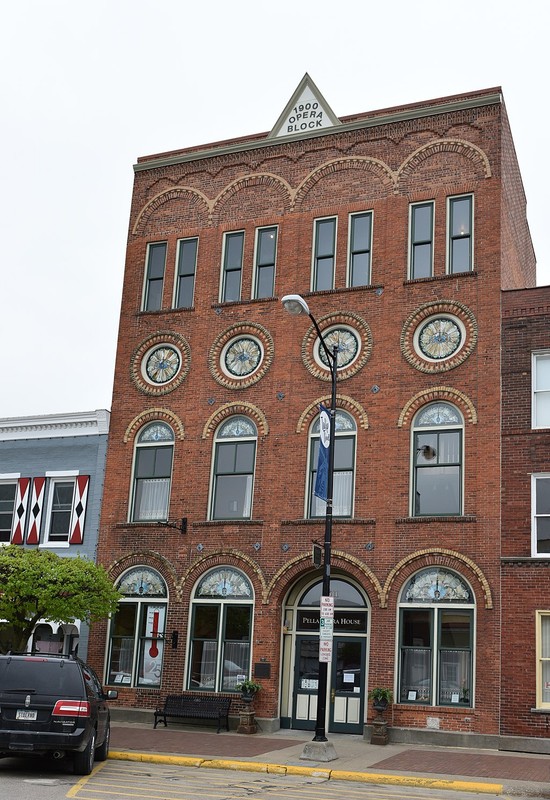Pella Opera House
Introduction
Text-to-speech Audio
The Pella Opera House is one of the city's most distinctive landmarks. It was built in 1900 and is a fine example of Victorian Romanesque architecture, featuring circular and semi-circular arches above windows, polychromatic orange and light colored brickwork, and stained glass in many of the windows. Until recently, it was unsuccessful as an entertainment venue and for many years was used for a variety of commercial purposes. Today it hosts a wide range of concerts, theatrical productions, and cultural programs. It was added to the National Register of Historic Places in 1992.
Images
The Pella Opera House is the city's main performing arts venue. Built in 1900, it is a fine example of Victorian Romanesque architecture and hosts a variety of events and performances throughout the year.

Backstory and Context
Text-to-speech Audio
The Pella Opera House was the second one built in the city. The first was erected in 1860 but was destroyed by a fire in 1883. In 1900, Central College and the YMCA built an auditorium close to the college's campus. It was used for concerts, lectures, theater productions, church gatherings, and political and cultural events. The effort to build a new opera house was led by a local businessman named Herman Rietveld, who operated the Pella Drain and Tile Company.
Apparently residents were surprised when construction began since the YMCA Auditorium had just been built. Rietveld was enthusiastic about the project, however, and he largely financed its construction. Unfortunately, the Opera House struggled financially from the outset. It competed with the auditorium and the population was not large enough to support it (there were only 3,000 residents in Pella at the time and the Opera House could accommodate 1,000 people). The emergence of silent films decreased interest as well. Films were shown in the Opera House but a movie theater called the Electric Palace opened down the street in 1908. The Opera House was also poorly managed and uncomfortable for patrons (it was not properly heated and audience site lines from the balcony were inadequate).
In 1915, the Women's Federate Club rented the building and changed the name to Federated Club Building. The club opened a rest room (not a bathroom) for women to rest and leave their children while they went shopping. Performances were still held in the theater as well.
In 1918, entertainment at the Opera House came to an end when the White Way Auto Company bought the building. Shortly after the sale, it was sold to the Farmers Produce Business, which operated a produce house and grocery store in the building. In the 1930s, people gathered on the fourth floor to listen to basketball games that were played on the radio. In 1957, a couple bought it and opened an antique shop and bowling alley on the first floor and a skating rink on one of the upper floors. A hardware store operated on the first floor between 1967 and 1984. In 1969 the city opened an arts center on the second floor. The Pella Historical Society then acquired the building in 1987. Over the next few years the building was renovated and it reopened in 1990. It was renovated again in 2016.
Sources
"History." Pella Opera House. Accessed January 14, 2022. https://pellaoperahouse.org/history.
Page, William C. "Pella Opera House." National Park Service - National Register of Historic Places Nomination Form. March 20, 1992. https://npgallery.nps.gov/NRHP/GetAsset/NRHP/91001080_text.
Wikimedia Commons: https://commons.wikimedia.org/wiki/File:The_Pellagra_Opera_House.jpeg
